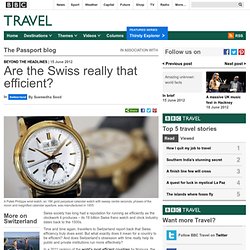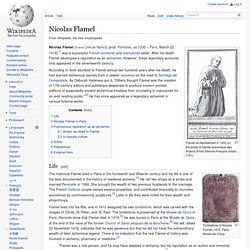

Home. Are the Swiss really efficient? : Switzerland. Swiss society has long had a reputation for running as efficiently as the clockwork it produces – its 19 billion Swiss franc watch and clock industry dates back to the 1500s.

Time and time again, travellers to Switzerland report back that Swiss efficiency truly does exist. But what exactly does it mean for a country to be efficient? And does Switzerland’s obsession with time really help its public and private institutions run more effectively? In a 2011 ranking of the world’s most efficient countries by Nomura, the Japanese bank, Switzerland came in first place. In this case, the metric for efficiency was the amount of energy a country requires to churn out $1 million of gross domestic product (GDP). But that’s not likely what visitors are talking about when they marvel at how efficiently things run in Switzerland.
In the workplace, lunch is universally taken at exactly noon for exactly one hour, and coffee breaks are taken at 9 am and 4 pm. Nicolas Flamel. Flamel as represented in 1402 on the portal of Sainte-Geneviève des Ardens (From Étienne François Villain, 1761) Nicolas Flamel (French: [nikɔla flamɛl]; prob.

Pontoise, ca 1330 – Paris, March 22, 1418)[1] was a successful French scrivener and manuscript-seller. After his death Flamel developed a reputation as an alchemist. However, these legendary accounts only appeared in the seventeenth century. According to texts ascribed to Flamel almost two hundred years after his death, he had learned alchemical secrets from a Jewish converso on the road to Santiago de Compostela. Life[edit] Tombstone of Nicolas Flamel, 1418, Paris, Musée de Cluny.
The historical Flamel lived in Paris in the fourteenth and fifteenth century and his life is one of the best documented in the history of medieval alchemy.[3] He ran two shops as a scribe and married Perenelle in 1368. Flamel lived into his 80s, and in 1410 designed his own tombstone, which was carved with the images of Christ, St. Notes[edit] Sirius. Sirius appears bright because of both its intrinsic luminosity and its proximity to Earth.

At a distance of 2.6 parsecs (8.6 ly), as determined by the Hipparcos astrometry satellite,[5][19][20] the Sirius system is one of Earth's near neighbors; for Northern-hemisphere observers between 30 degrees and 73 degrees of latitude (including almost all of Europe and North America), it is the closest star (after the Sun) that can be seen with the naked eye. Sirius is gradually moving closer to the Solar System, so it will slightly increase in brightness over the next 60,000 years. After that time its distance will begin to recede, but it will continue to be the brightest star in the Earth's sky for the next 210,000 years.[21] Sirius A is about twice as massive as the Sun and has an absolute visual magnitude of 1.42. It is 25 times more luminous than the Sun[7] but has a significantly lower luminosity than other bright stars such as Canopus or Rigel.
Observational history[edit] Kinematics[edit]
The Harry Potter Lexicon. Click above for detailed menus, click below for special sections Affiliate Sites: These web sites have received special permission to use material from the Lexicon to create similar sites for non-English-speaking fans.
L'Encyclopédie Harry Potter (in French)El Diccionario de los Magos (en Español) Hogwarts Library - Login. Hogwarts Library - Login. The exeter book. Harry Potter 2 - Snape's Office. Recipes.